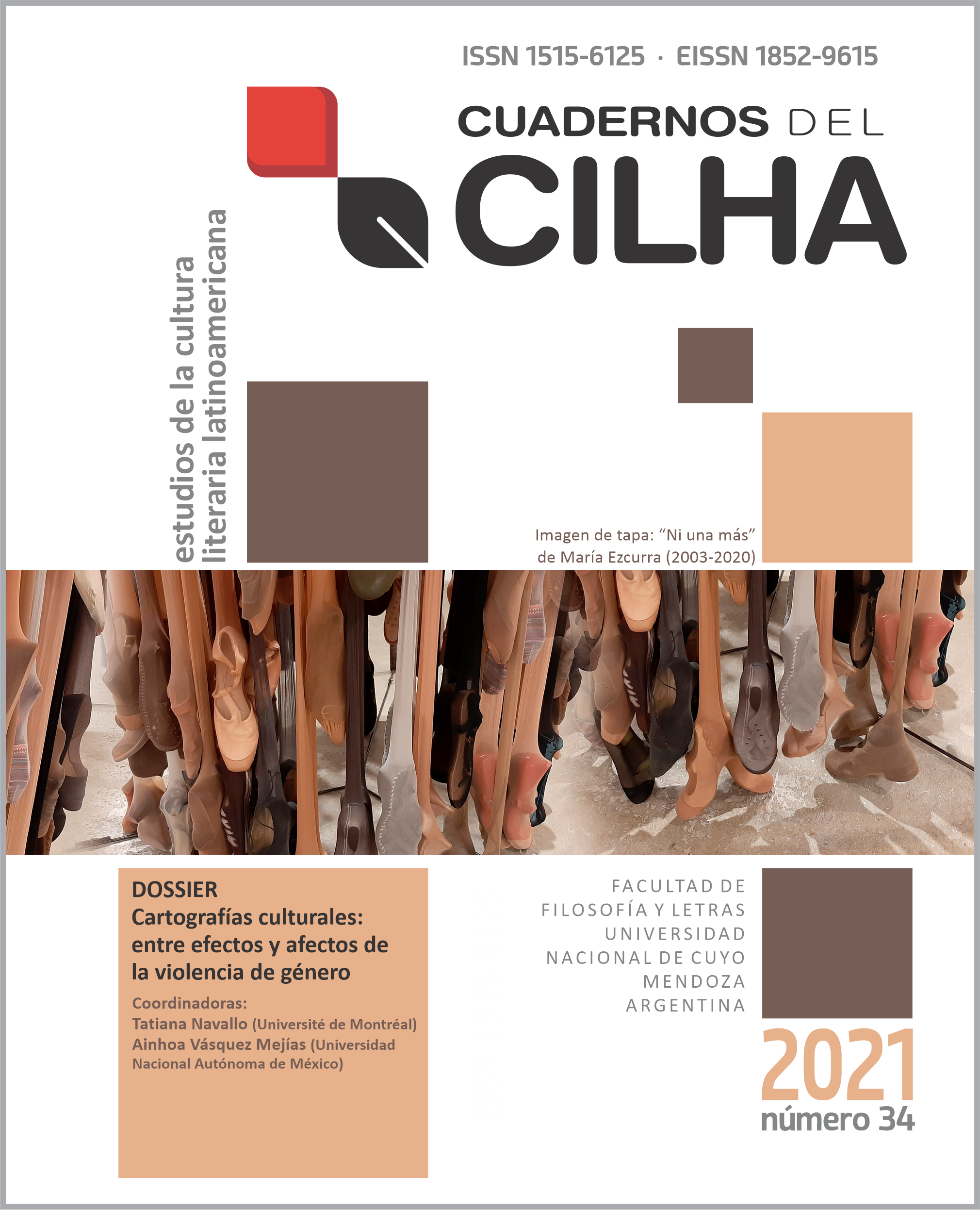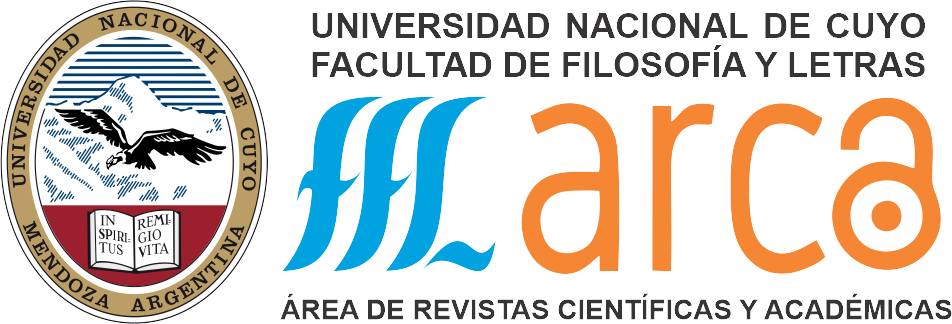The land of the jungle: the witch and the mesopotamian gothic in Mariana Enríquez's "Tela de araña"
DOI:
https://doi.org/10.48162/rev.34.001Keywords:
Regionalismo gótico, Horacio Quiroga, Relatos de fantasmas, Brujería, Gothic regionalism, Ghost stories, WitchcraftAbstract
Mariana Enríquez´s short story "Tela de araña" included in Las cosas que perdimos en el fuego (2016) can be thought as a manifestation of "mesopotamian gothic" because it functions as a rewriting and a detour of the writing of the jungle and the space found in Horacio Quiroga's narrative. The purpose of this text is to explore not only the characteristics of this Gothic regionalism, but also the relevance of the figure of the witch or sorceress in which the meanings linked to the local legends and beliefs intersect and to motives or models that transcend national and regional boundaries. In "Tela de araña ", both the hostile environment of the jungle, as the stories of the apparitions with the figure of the witch acquire an anti-state and anti-patriarchal political sense. The crossroads between the local and the global must be read here enlightened by the concept of globalgothic (Botting and Edwards) since the search for generic resonance that arises from legends and popular stories functions as a specific and local expression of tropes and strategies that literary criticism has historically associated with gothic.
References
Andermann, J. (2000). Mapas de poder: una arqueología literaria del espacio argentino. Beatriz Viterbo Editora.
Botting, F., y Edwards, J. (2015). Theorising globalgothic. In Glenny Byron (ed), Globalgothic (págs. 11-24). Manchester University Press.
Byron, G. (ed.) (2015). “Introduction”. En Globalgothic. Manchester University Press
Casanova-Vizcaíno, S., y Ordiz, I. (Eds.). (2017). Latin American Gothic in Literature and Culture. Routledge.
Contreras, S. (2013). Realismos, cuestiones críticas. En Contreras, Sandra (Ed.), Realismos, cuestiones críticas (págs. 5-25). Centro de Estudios de Literatura Argentina.
Coverley, M. (2018). Psychogeography. Oldcastle Books Ltd.
Deleuze, G. y Guattari, F. (2002). Mil mesetas. Capitalismo y esquizofrenia. Pre-textos.
Edwards, J., y Vasconcelos, S. (eds.) (2016). Tropical Gothic in Literature and Culture: The Americas. Routledge.
Eljaiek-Rodríguez, G. (2017). Selva de fantasmas: el gótico en la literatura y el cine latinoamericanos. Editorial Pontificia Universidad Javeriana.
Enríquez, M. (2005, 6 de febrero). Excéntricos y visionarios. Radar Libros. Página 12. https://www.pagina12.com.ar/diario/suplementos/libros/10-1415-2005-02-06.html Consultado el 2 de agosto de 2020.
Enríquez, M. (2011, 9 de enero). Viejas brujas. Radar Libros. Página 12. https://www.pagina12.com.ar/diario/suplementos/libros/10-4124-2011-01-09.html. Consultado el 2 de agosto de 2020.
Enríquez, M. (2009). Los peligros de fumar en la cama. Emecé.
Enríquez, M. (2016). Las cosas que perdimos en el fuego. Anagrama.
Enríquez, M. (2016, 13 de marzo) Cruz diablo. Radar Libros. Página 12. https://www.pagina12.com.ar/diario/suplementos/radar/9-11338-2016-03-13.html. Consultado el 2 de agosto de 2020.
Farberman, J. (2012). Magia, brujería y cultura popular: De la colonia al siglo 20. Sudamericana.
Federici, S. (2004). Calibán y la bruja: mujeres, cuerpo y acumulación originaria. Traficantes de Sueños.
Fiedler, L. (1997). Love and death in the American novel. Dalkey Archive Press.
Foucault, M. (1996). Médicos, jueces y brujos en el siglo XVII. En La vida de los hombres infames (págs. 21-36). Editorial Altamira.
Gallego Cuiñas, A. (2020). El feminismo gótico de Mariana Enríquez. Latin American Literature Today, 14, 1-6. http://www.latinamericanliteraturetoday.org/es/2020/mayo/el-feminismo-g%C3%B3tico-de-mariana-enr%C3%ADquez-de-ana-gallego-cui%C3%B1as
Gatti, G. (2008). El detenido-desaparecido: narrativas posibles para una catástrofe de la identidad. Ediciones Trilce.
Ginzburg, C. (2013). Brujería y piedad popular. Notas a propósito de un proceso de 1519. En Módena. Mitos, emblemas, indicios. Morfología e historia (págs. 21-46). Prometeo.
Glantz, M. (1976). Poe en Quiroga. En Á. Flores (comp.), Aproximaciones a Horacio Quiroga (págs. 93-118). Monte Ávila Editores.
Hedrick, T. (2017). The Spirits Talk to Us: Regionalism, Poverty, and Romance in Mexican American Gothic Fiction. Studies in the Novel, 49 (3), 322-340.
Heholt, R., y Hughes, W. (2018). Gothic Britain: dark places in the provinces and margins of the British Isles. University of Wales Press
Mailhe, A. (2017). Creencias y supersticiones en conflicto: visiones de la religiosidad popular en la Argentina de entre siglos. Orbis Tertius, XXII (26), e051, 1-12. https://doi.org/10.24215/18517811e051
Ordiz, I. (2019). De brujas, mujeres libres y otras transgresiones: el gótico en Las cosas que perdimos en el fuego de Mariana Enríquez. En N. Ávarez Méndez, y A. Abello Verano (eds.), Realidades fracturadas. Estéticas de lo insólito en la narrativa en lengua española (1980-2018) (págs. 263-285). Visor Books, S.L.
Piglia, R. (2014). Modos de narrar. En Antología Personal (págs. 255-267). Fondo de Cultura Económica.
Piglia, R. (2016). Las tres vanguardias: Saer, Puig, Walsh. Eterna Cadencia.
Piglia, R. (1993). Quiroga y el horror. La gallina degollada de Horacio Quiroga. En La Argentina en pedazos (págs. 1-9). Ediciones de la Urraca.
Quiroga, H. (1996). El Lobisón, La miel silvestre, La insolación. En Todos los cuentos. ALLCA XX.
Negroni, M. (2015) La noche tiene mil ojos. Caja Negra.
Raymond, W. (2000). Palabras clave. Un vocabulario de la cultura y la sociedad. Nueva Vision.
Rodríguez de la Vega, V. (2018). Desafiando al patriarcado a través del fuego: el empoderamiento de las mujeres en Las cosas que perdimos en el fuego de Mariana Enríquez. Transmodernity: Journal of Peripheral Cultural Production of the Luso-Hispanic World, 8 (1), 144-161 https://doi.org/10.5070/T481039390.
Downloads
Published
Versions
- 26-06-2021 (2)
- 21-06-2021 (1)





















